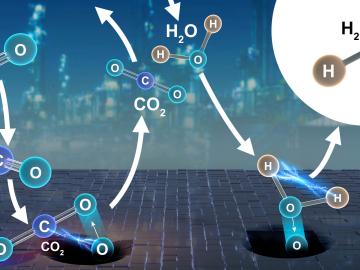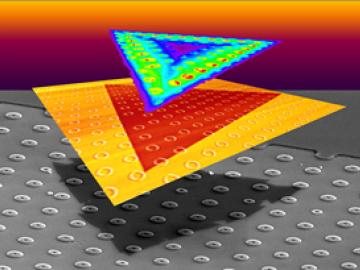
Filter News
Area of Research
- Advanced Manufacturing (2)
- Biology and Environment (11)
- Computer Science (2)
- Energy Science (31)
- Fuel Cycle Science and Technology (1)
- Fusion and Fission (13)
- Fusion Energy (1)
- Isotope Development and Production (1)
- Isotopes (2)
- Materials (61)
- Materials Characterization (1)
- Materials for Computing (8)
- Materials Under Extremes (1)
- National Security (13)
- Neutron Science (44)
- Nuclear Science and Technology (8)
- Sensors and Controls (1)
- Supercomputing (29)
News Type
News Topics
- (-) Artificial Intelligence (35)
- (-) Materials Science (56)
- (-) Mercury (2)
- (-) Neutron Science (54)
- (-) Nuclear Energy (28)
- (-) Physics (26)
- (-) Polymers (13)
- (-) Security (12)
- (-) Space Exploration (3)
- 3-D Printing/Advanced Manufacturing (48)
- Advanced Reactors (12)
- Big Data (8)
- Bioenergy (25)
- Biology (26)
- Biomedical (17)
- Biotechnology (10)
- Buildings (15)
- Chemical Sciences (35)
- Clean Water (2)
- Composites (12)
- Computer Science (63)
- Coronavirus (17)
- Critical Materials (11)
- Cybersecurity (17)
- Education (3)
- Element Discovery (1)
- Energy Storage (43)
- Environment (38)
- Exascale Computing (13)
- Fossil Energy (1)
- Frontier (16)
- Fusion (17)
- Grid (16)
- High-Performance Computing (32)
- Isotopes (20)
- ITER (2)
- Machine Learning (13)
- Materials (60)
- Microelectronics (1)
- Microscopy (17)
- Molten Salt (3)
- Nanotechnology (29)
- National Security (18)
- Partnerships (31)
- Quantum Computing (13)
- Quantum Science (31)
- Simulation (10)
- Statistics (1)
- Summit (22)
- Transportation (26)
Media Contacts

Using the Titan supercomputer and the Spallation Neutron Source at the Department of Energy’s Oak Ridge National Laboratory, scientists have created the most accurate 3D model yet of an intrinsically disordered protein, revealing the ensemble of its atomic-level structures.

Processes like manufacturing aircraft parts, analyzing data from doctors’ notes and identifying national security threats may seem unrelated, but at the U.S. Department of Energy’s Oak Ridge National Laboratory, artificial intelligence is improving all of these tasks.

Quanex Building Products has signed a non-exclusive agreement to license a method to produce insulating material from ORNL. The low-cost material can be used as an additive to increase thermal insulation performance and improve energy efficiency when applied to a variety of building products.

IDEMIA Identity & Security USA has licensed an advanced optical array developed at Oak Ridge National Laboratory. The portable technology can be used to help identify individuals in challenging outdoor conditions.

Collaborators at the Department of Energy’s Oak Ridge National Laboratory and U.S. universities used neutron scattering and other advanced characterization techniques to study how a prominent catalyst enables the “water-gas shift” reaction to purify and generate hydrogen at industrial scale.

A team led by scientists at the Department of Energy’s Oak Ridge National Laboratory explored how atomically thin two-dimensional (2D) crystals can grow over 3D objects and how the curvature of those objects can stretch and strain the

An ORNL-led team's observation of certain crystalline ice phases challenges accepted theories about super-cooled water and non-crystalline ice. Their findings, reported in the journal Nature, will also lead to better understanding of ice and its various phases found on other planets, moons and elsewhere in space.

OAK RIDGE, Tenn., May 14, 2019—Advanced Research Systems, Inc., has licensed a technology designed to automatically refill liquid helium used in laboratory equipment for low-temperature scientific experiments, which will reduce downtime, recover more helium and increase overall efficiency.

OAK RIDGE, Tenn., May 7, 2019—Energy Secretary Rick Perry, Congressman Chuck Fleischmann and lab officials today broke ground on a multipurpose research facility that will provide state-of-the-art laboratory space

OAK RIDGE, Tenn., March 20, 2019—Direct observations of the structure and catalytic mechanism of a prototypical kinase enzyme—protein kinase A or PKA—will provide researchers and drug developers with significantly enhanced abilities to understand and treat fatal diseases and neurological disorders such as cancer, diabetes, and cystic fibrosis.


